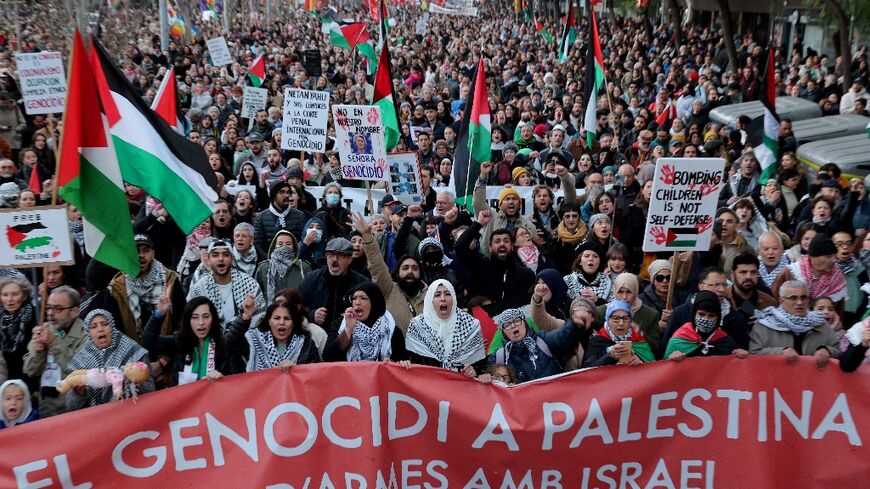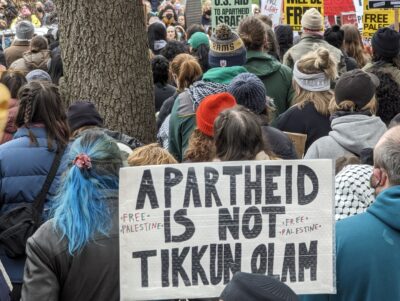Yes, I think so. Today’s story, Children Fill Ledger of Death, No Matter How, or How Many about Israel’s murder of Paletinian children during its Rafah incursion, merely buttresses his record for pentrating, profound and deeply human writing on the conflict. Among Bennet’s many wonderful pieces, this perhaps is his most maddeningly tragic and human: Between Two Homes and Two Peoples, a Soldier Wanders. I’ve already cited him in a previous post as deeply deserving of a Pulitzer. Let’s hope the Prize committee agrees with me.
I don’t usually cite long quotations in my blog. But this prose is some of the best I know describing the conflcit and deserving of attention:
Set in fields of white, pink and red carnations, the giant cooler here, which usually holds vegetables or flowers, has been turned over to the dead.
It was to this cooler that, inevitably, the Palestinian doctor came Wednesday morning, when, just as inevitably, the latest Israeli Army raid touched off a parallel struggle to define reality. Were there, in fact, children among the dead, as the Palestinians claimed? How many? Did they die from Israeli sniper fire or from militants’ explosives?
The doctor, Ahmed Abu Nikera, had had enough of these questions. In the dank, shadowy room, he yanked and pulled to open the bloodstained white cloth wrapping one of the bodies as tightly as a mummy.
“This is a child,” he said, after he revealed the pale gray face of Ibrahim al Qun, 14. “This is the exit wound.” He pointed at the ragged, softball-sized black hole where the boy’s left eye had been. A sniper’s bullet entered at the back of the boy’s head, he said…
Whether the casualties on any given day are on one side or the other or both, there is also, in a dark space somewhere, a reality. There is a dead child; there is an exit wound.
How many dead children is too many is a question often asked by Palestinians and Israelis, but it shows no hint of being resolved.
A couple of hours after the visit to the cooler, life here took another cruel and bewildering twist. On Wednesday afternoon, an Israeli helicopter gunship and a tank opened fire as demonstrators approached a neighborhood on Rafah’s outskirts that the Israelis seized Tuesday.
Men with agony in their faces ran carrying little boys who bled from many shrapnel wounds. It was bedlam, panic, a vertiginous glimpse of hell.
The Israeli military has issued the typical “blaming the victims” response to the murder of innocent Palestinian civilian protestors:
It suggested that the cause might have been explosives planted by militants. The helicopter and tank fire was legitimate, the government said, because there were gunmen in the crowd of protesters.
Many witnesses said there were no gunmen.
On Tuesday night, Palestinian officials reported that Israeli snipers had killed two other children while they were taking in laundry on the family’s roof. They were Asma al-Moghair, 16, and her brother, Ahmad, 13.
But an Israeli officer leading the operation, whom the army would identify only as Colonel Erez, said an initial army investigation of the deaths was inconclusive. He noted that Palestinians had planted many bombs in hopes of killing soldiers.
“We don’t rule out the possibility that these youngsters were killed by the bombs,” he said. “I can say unequivocally that no one in our unit put this boy and girl in his cross hairs with the aim of killing them.”
Colonel Erez said that Israel had asked that the bodies be turned over for the investigation.
Asma’s body was in the morgue of Al Najar hospital, which, with a capacity of only six corpses, had quickly filled.
Dr. Nikara untied a cord binding the cloth around the child’s neck, then pulled back Asma’s hair to reveal a hole the size of a half dollar over her left ear — an exit wound. She had no sign of shrapnel wounds.
“This is what the Israelis call an accident,” the doctor said.
Ahmad lay in the flower cooler. He had a similar hole in his head, above his right ear, and he did not have shrapnel wounds.
Shall we believe the good Colonel Erez? Did these poor teenagers trying to help their mother by hanging laundry on a closthesline die at the hands of a militant bomb on the roof of their home? I find this scenario preposterous. But I don’t think Col. Erez cares. He merely wants to issue a denial and shift the blame back on the Palestinians. Nor do I believe Erez’ “unequivocal” claim that no one in his command put the children in their crosshairs. You’ll notice he adds “with the aim of killing them.” Well, gee that leaves a hole wide enough for a truck to pass through. So the sniper shot them without intending to kill them, but killed them nevertheless. That gets the good Colonel off the hook doesn’t it?
Finally, Bennet’s conclusive comment from the doctor sums up the hopelessness and desperation of the current conflict:
As the tumult quieted in Al Najar hospital after the wounded were rushed in Wednesday, an exhausted doctor dropped into a chair, his blue tie loose around his neck.
“It doesn’t make any difference,” he said of the casualties. “Life equals death, for all of us.”
Thank you, James Bennet for making us see both the tragedy and overarching humanity in the Israeli-Palestinian war.






I just want to say I really enjoy reading your blog… it’s a refreshing blast of sanity. This week I’ve been depressed by the news in Gaza, horrified by an article in the East Bay Express about antisemitism on the UC Berkeley campus (where I went to grad. school) and infuriated by the comments on my blog by a rabidly anti-Palestinian writer who takes issue with me taking issue with his cold-bloodedness… sometimes it seems like there’s no middle ground anymore. It’s nice to be reminded that it is possible to care about Israel AND still hold onto the belief that human rights matter! What a concept…